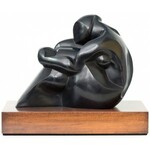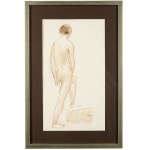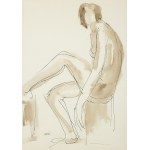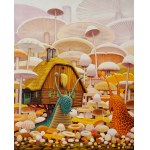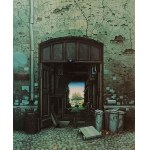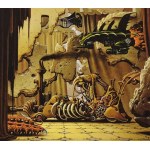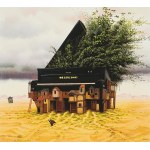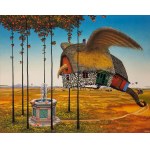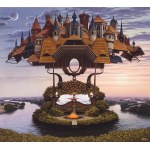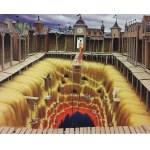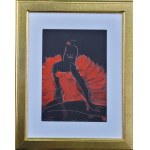25.5 x 17.5 cm - cast bronze, chiseled, patinated height: 25.5 cm, figure height: 21 cm
signed K. Kobro HC, foundry mark: CLEMENTI FONDEUR
Provenance:
Private collection, Paris.
Private collection, Szczecin.
Literature:
- Nika Strzeminska, Katarzyna Kobro, Wydawnictwo Naukowe Scholar, Warsaw 1999.
Only a little over 20 works survived from Katarzyna Kobro's sculptural output - 14 spatial compositions and 7 nudes (including 4 from 1948). In 1930, the artist donated Nude (1), along with two other figures from this series, as an individual gift to the collection of the J. and K. Bartoszewicz City Museum of History and Art, which she co-founded. Bartoszewicz in Lodz (renamed the Museum of Art in 1930). It is worth mentioning here that neither Strzeminski nor Kobro sold their works. Once they considered selling Kobro's nudes in order to raise funds for the publication of the book Kompozycja przestrzeni, obliczenia rytmu czasoprzestrzennego (Composition of Space, Calculation of Space-Time Rhythm), but this did not happen, and the book was published in 1931. And after the war, when the Lodz museum began to be reorganized, Kobro and Strzeminski, each separately, donated to the museum's collection almost all the sculptures and paintings that Kobro had saved in 1940.
Cubo-futurist female nudes were created by the artist throughout her life. Created between 1925 and 1930, the plaster piece (22 x 13 x 19 cm, inv. no. MS/SN/R/2) is one of three figures that were named after the war, when the collection was cleaned up: Nude (1), Nude (2) and Nude (3). Kobro sculpted them in clay and then cast them in plaster. According to Zenobia Karnicka of the Lodz Museum of Art, who compared the above-mentioned three pre-war nudes with photographs of the sculptor from that period, the artist was her own model.
The circumstances of the creation of the bronze casts of the nudes are explained in her book Katarzyna Kobro by Nika Strzeminska, daughter of the artist and Władysław Strzeminski, published in 1998. In 1990, the Art Museum entered into an agreement with the Franki Berndt Gallery of Paris and Anka Ptaszkowska, who resides there, to make bronze casts of each of the three pre-war nudes. According to the agreement, 12 casts were to be made from each plaster. For this purpose, originals were borrowed from the museum and returned after the silicone mold and test plaster cast were made. As Nika Strzeminska states in 1998, correspondence between the museum and the gallery shows that one piece of each nude was made of black patinated bronze, while the casts intended for the museum's collection were not delivered. The author goes on to state that although the editors declared that none of the sculptures had been sold, the bronzes were offered at various art fairs, while Act (1) was listed as a bronze held in a private collection. At the time, silicone molds and test casts were in the possession of Alain Anceau, who took over the Paris gallery after France Berndt. The few subsequent nude casts that appeared on the European auction market were probably bronzes created from these molds.
Katarzyna Kobro (Moscow1898 - Lodz1951) - sculptor and art theorist, was one of the most prominent artists associated with the interwar avant-garde in Poland. She was born in Moscow in a family with German roots. Starting in 1917, she studied at the School of Painting, Sculpture and Architecture in Moscow (later the Second State Free Art Workshops) and quickly became associated with the left constructivist milieu. During this time she also met her future husband, Wladyslaw Strzeminski. In 1920, the artist moved to Smolensk, where she collaborated with Strzeminski, including designing posters for the Russian Telegraphic Agency, ROSTA, and participating in the deliberations of the New Art Promoters, UNOWIS. During this time, she created sculptures related to the works of Tatlin and Malevich, the latter described as suprematist. At the turn of 1921/1922, she made her way to Poland with the just-married Władysław Strzemiński. She was a member of the leading avant-garde groups in Poland at the time, such as Blok, Praesens and "a.r.". As part of the latter, she worked with her husband to assemble the International Collection of Modern Art, which was donated to the Museum of Art in Lodz. Kobro's works were shown, among others, at the International Theatre Exhibition (1926), the Warsaw Salon of Modernists (1928), the Autumn Salon in Paris (1928), and the Exhibition of Polish Art in Brussels (1928, then - The Hague, Amsterdam, 1929). In 1929, as part of the activities of the Praesens group, she participated in creating the interior design of the pavilions at the Polish National Exhibition in Poznan. She was associated with an international group, bringing together artists creating abstract art, Abstraction-Création, and in 1936, she was the only artist from Poland to sign Charles Sirato's Parisian manifesto of new art, Manifeste Dimensioniste. She and her husband lived in various smaller towns in Poland: Szczekociny, Brzeziny, Koluszki and Żakowice, and since 1931 in Lodz. She earned her living mainly by teaching in secondary and vocational schools, where she worked almost until the late 1930s, when she focused on motherhood following the birth of her daughter Niki. During the Second War, she and her family stayed in Vileyka and Lodz. Then, in connection with the signing of the so-called Russian list, her conflict with her husband began, which led to their separation in 1947. The 1940s were a difficult time for the artist; remaining almost destitute, she struggled with child custody lawsuits and wartime deviation from Polish nationality. She died in a hospice in 1951. Her few surviving works are mostly in the Museum of Art in Lodz. Her most important works include a series of sculptures, Spatial Compositions, and Composition of Space, written with her husband. Calculations of Space-Time Rhythm (1931). Her sculptural work ranks among the most important achievements of avant-garde plastic art; related to the work of Kazimir Malevich or Georges Vantongerloo, it shows an original reflection on the logic of composing space, which could also be reflected in architecture.
Recently viewed
Please log in to see lots list
Favourites
Please log in to see lots list



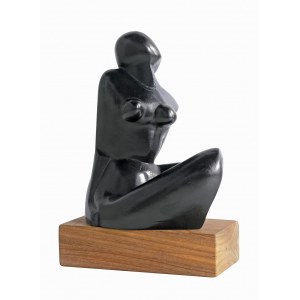
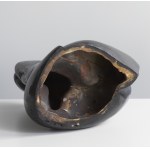

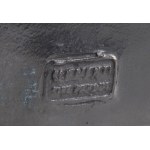
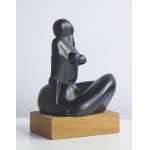
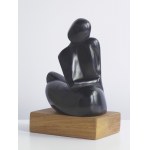
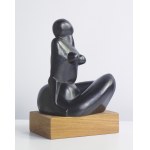
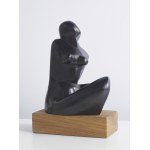








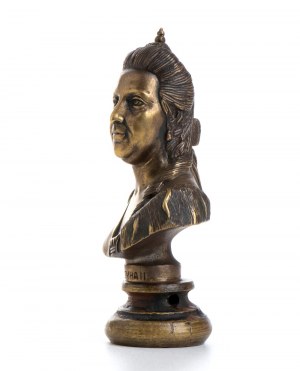
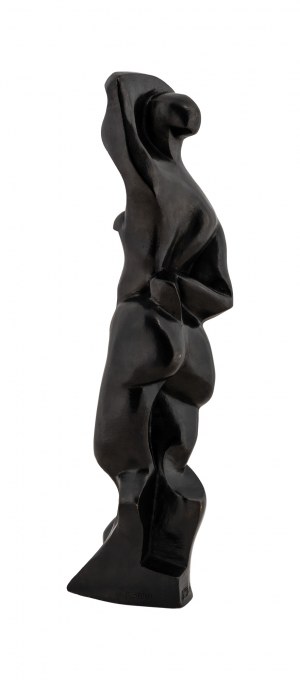

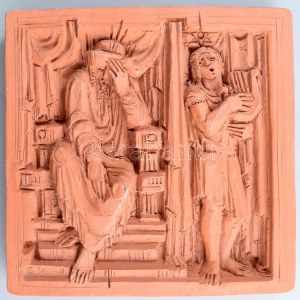
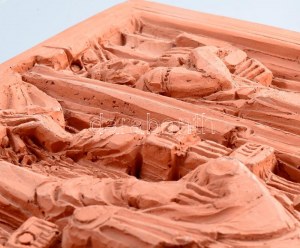

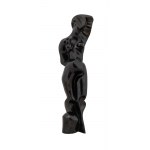
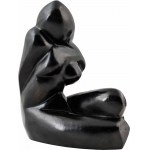
![Katarzyna Kobro (1898-1951), [rzeźba, 1948, odlew po 1989] Akt kobiecy - stojący](https://img1.one.bid/img/1863/365057_1w.jpg)
